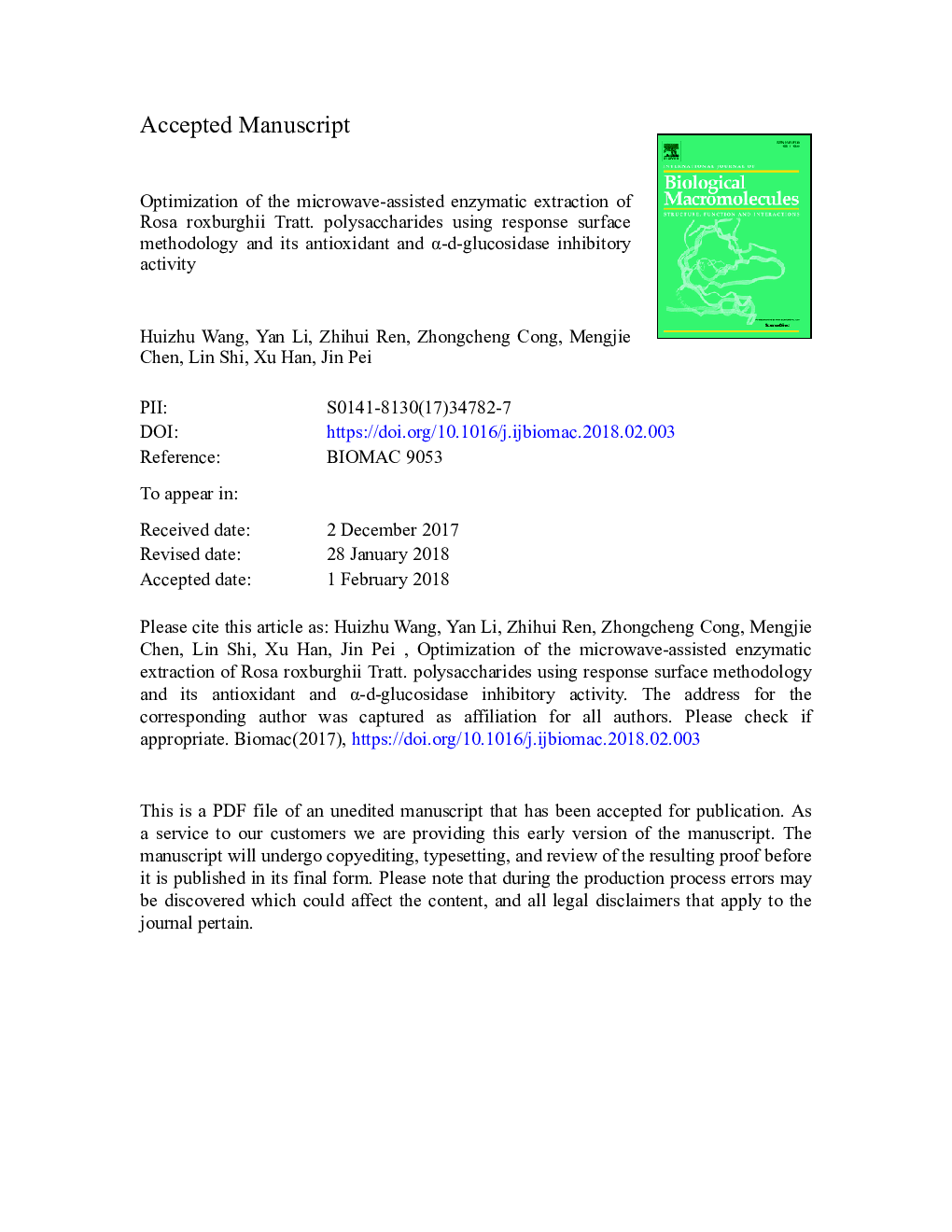| Article ID | Journal | Published Year | Pages | File Type |
|---|---|---|---|---|
| 8327659 | International Journal of Biological Macromolecules | 2018 | 41 Pages |
Abstract
An extraction assay applying microwave-assisted enzymatic treatment for polysaccharides in Rosa roxburghii was developed using response surface methodology. The process parameters were optimized using Plackett-Burman (PB) design and central composite design to enhance the Rosa roxburghii polysaccharide extraction yield. Specific conditions (microwave power, 575 W; microwave time, 18 min; liquid-to-material ratio, 13.5:1 mL/g; and enzyme dose, 6.5 g/mL) generated an experimental yield of 36.21 ± 0.62%, which closely agreed with the predicted value of 35.75%. Purification with a DEAE-52 cellulose column generated two fractions, PR-1 (from 6.2 Ã 103 to 7.4 KDa) and PR-2 (from 559.8 to 106.6 KDa). Subsequently, the antioxidant activity and α-d-glucosidase inhibitory activity of the two polysaccharide fractions were assessed; PR-1 exhibited stronger antioxidant activity and α-d-glucosidase inhibitory activity than PR-2. Finally, the monosaccharide composition of PR-1 was determined by HPLC using a 1-phenyl-3-methyl-5-pyrazolone precolumn derivatization method. The result showed that PR-1 contained mannose, ribose, rhamnose, glucosamine hydrochloride, glucuronic acid, galacturonic acid, glucose, galactose, arabinose and fucose with molar percentages of 2.1%, 0.54%, 2.1%, 0.26%, 1.5%, 22.7%, 24.0%, 26.4%, 19.6% and 0.89%, respectively.
Keywords
FucD-ribose1-phenyl-3-methyl-5-pyrazoloneD-galacturonic acidRHATFAD-glucoseMicrowave-assisted enzymatic extractionPMPPSAMCCDDPPHd-Fucosed-MannoseD-galactoseDMSOl-arabinosel-rhamnosep-nitrophenyl-α-d-glucopyranosideAscorbic acidd-Glucuronic acidTrifluoroacetic acidARARibDimethyl sulfoxideResponse surface methodologyRSMCentral composite designManInhibition ratePlackett-BurmanPolysaccharideGalGlu
Related Topics
Life Sciences
Biochemistry, Genetics and Molecular Biology
Biochemistry
Authors
Huizhu Wang, Yan Li, Zhihui Ren, Zhongcheng Cong, Mengjie Chen, Lin Shi, Xu Han, Jin Pei,
